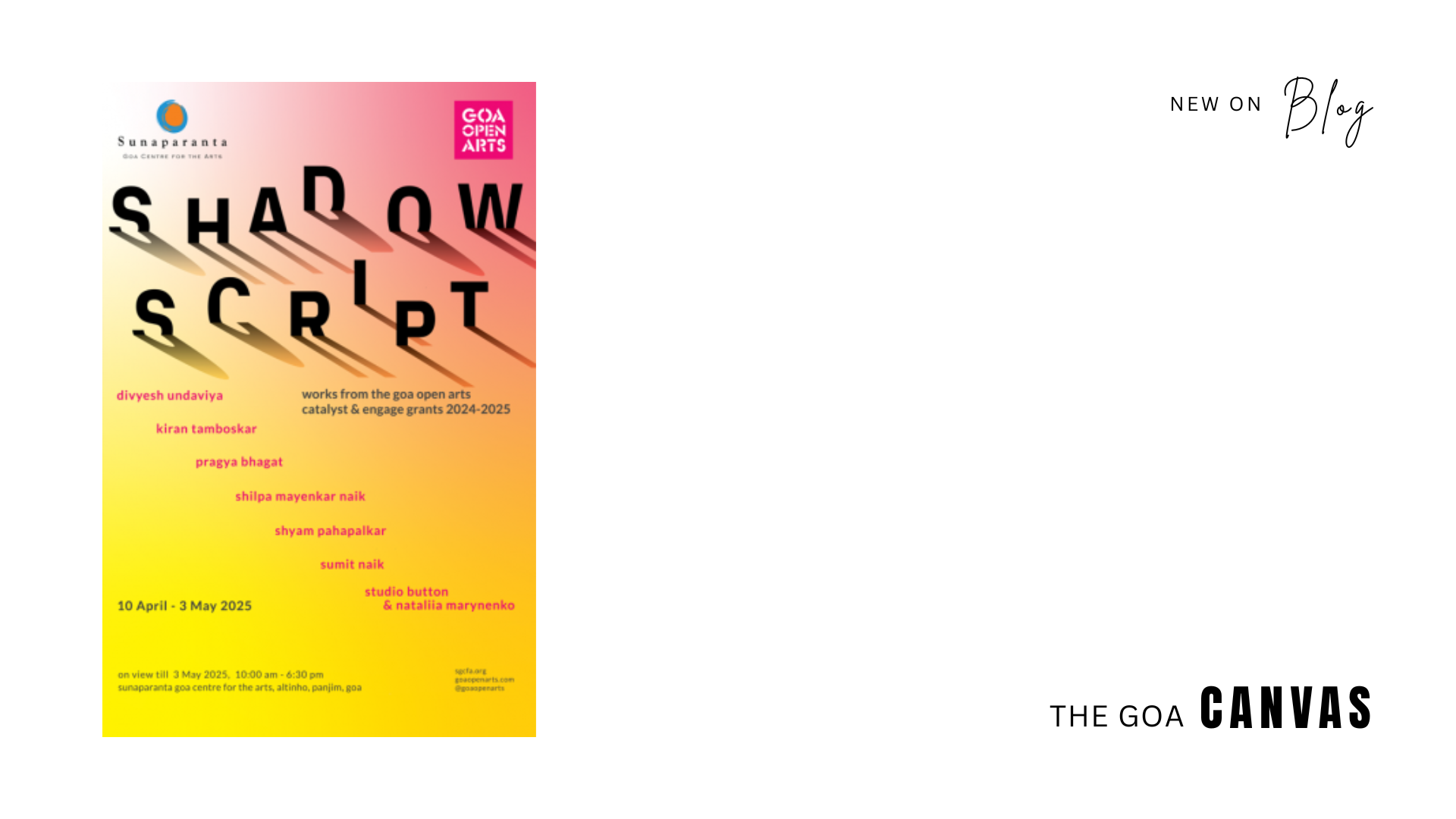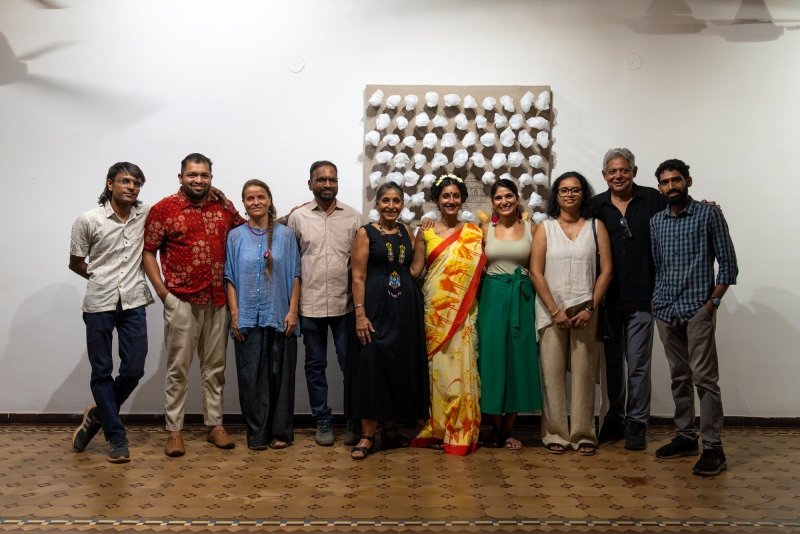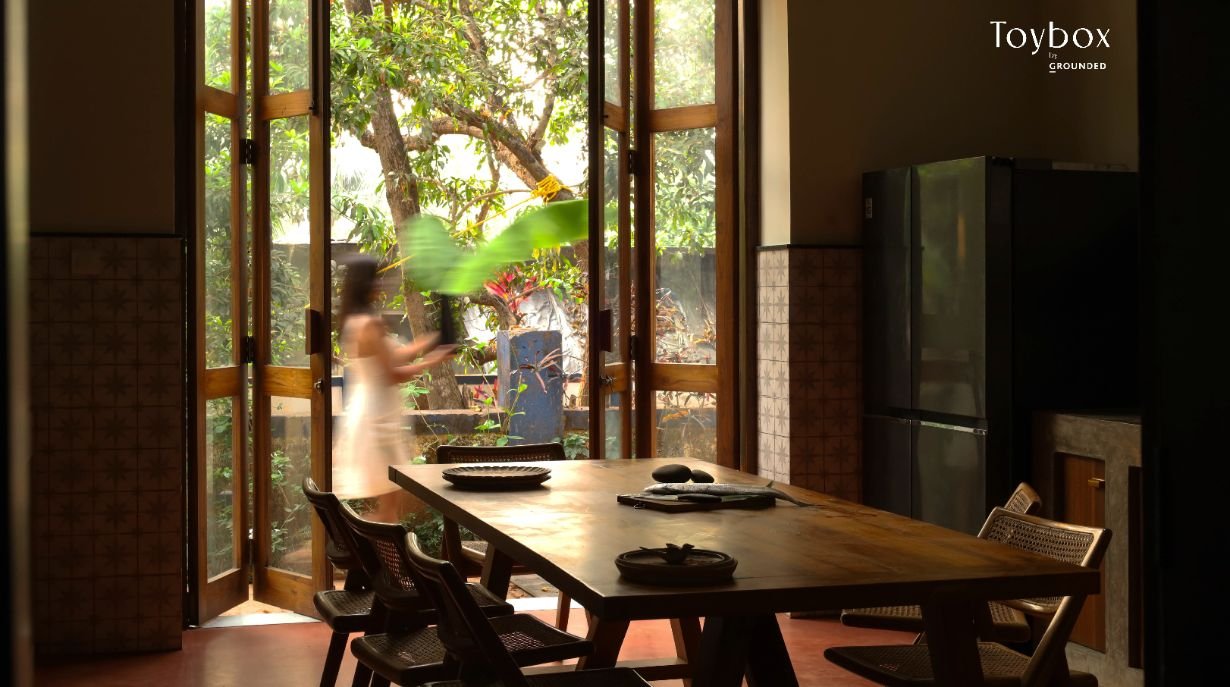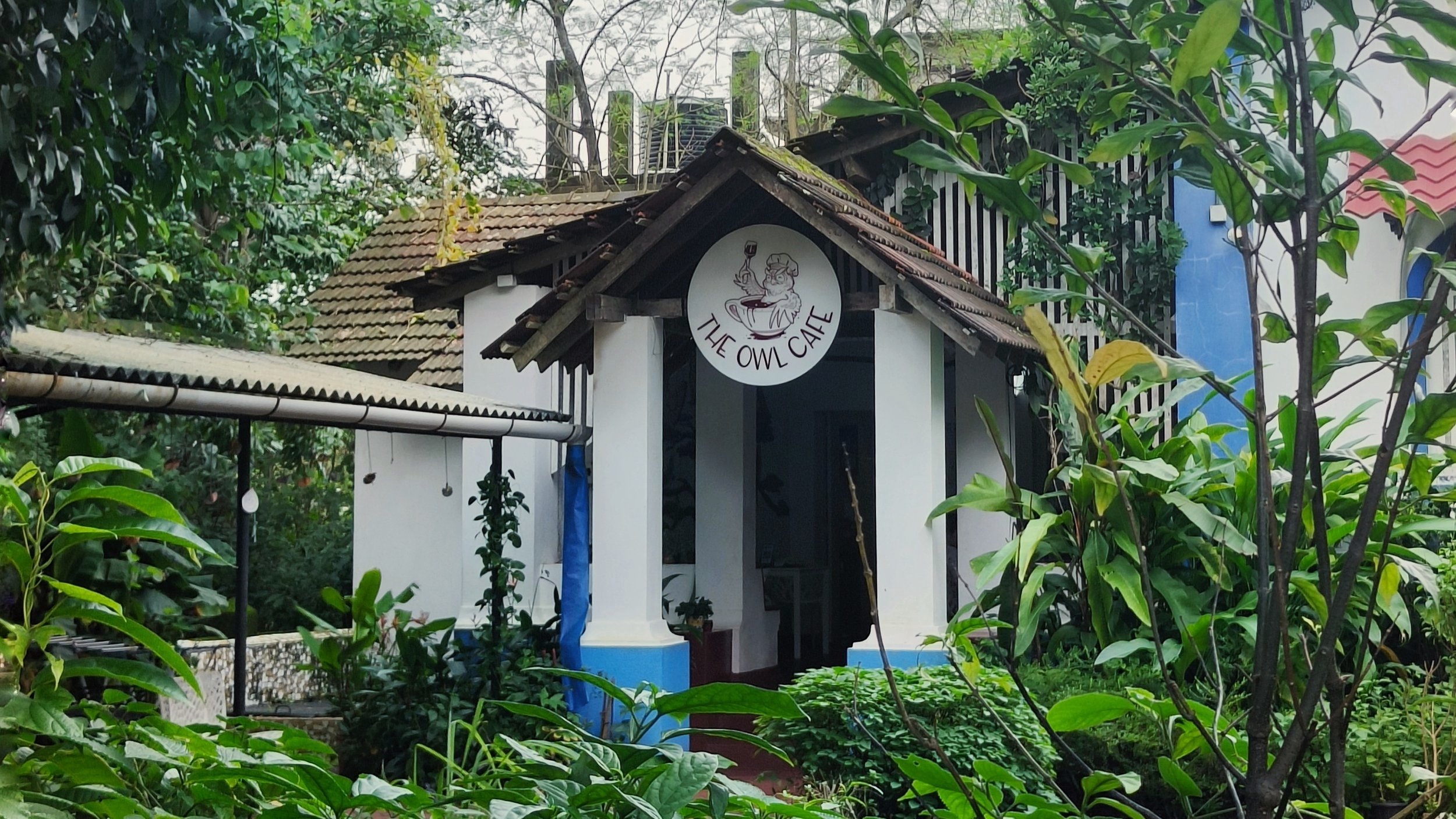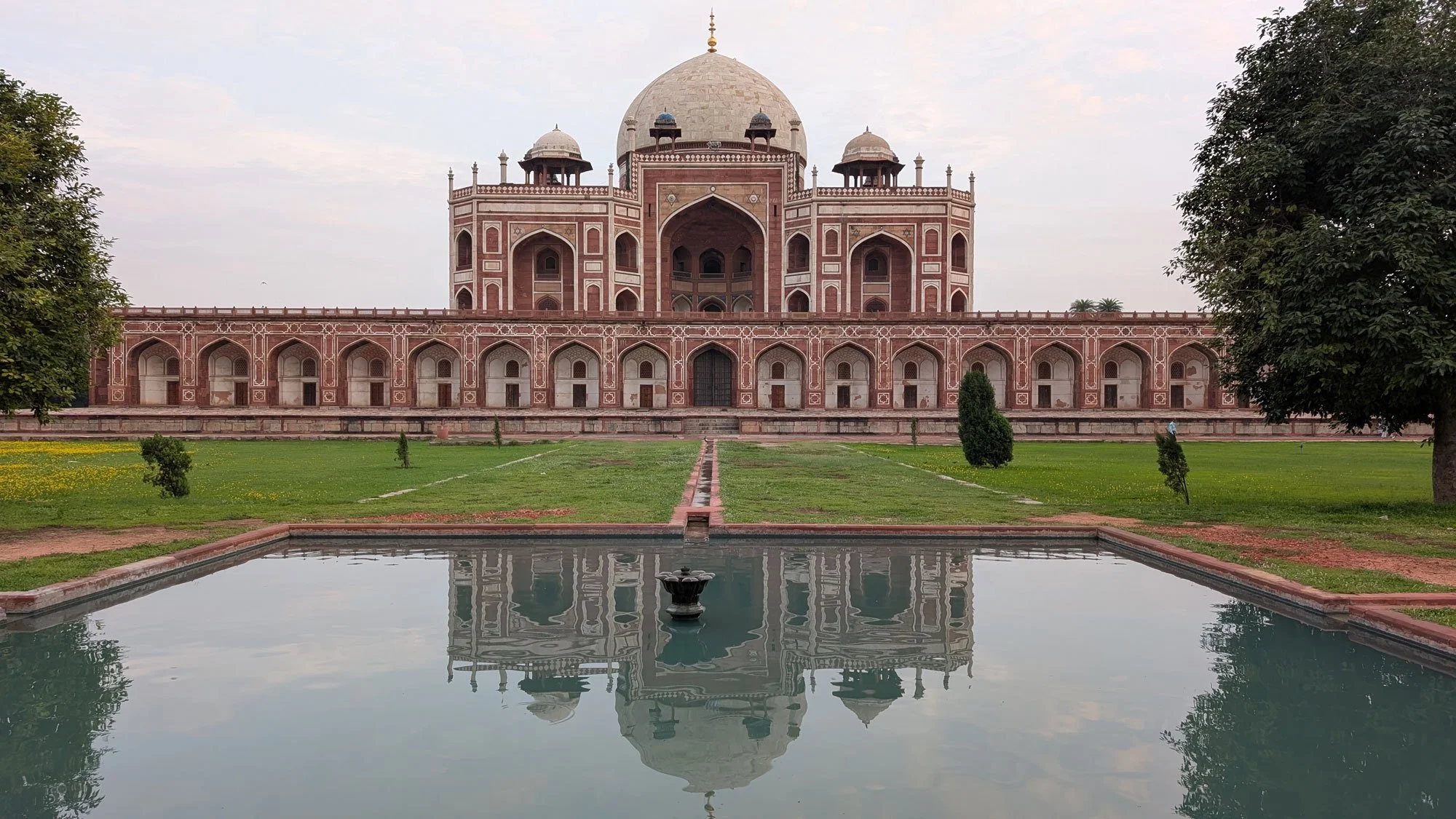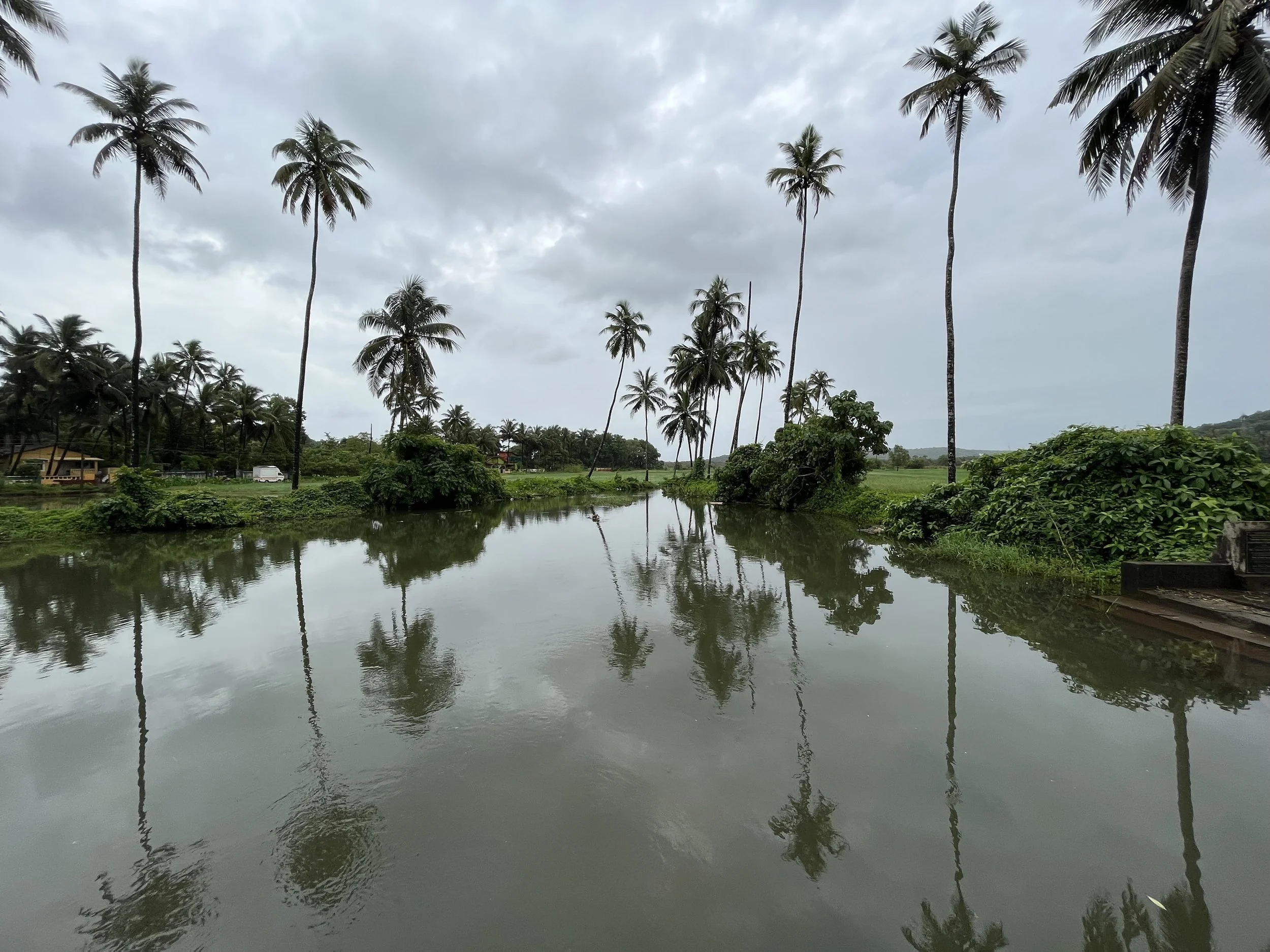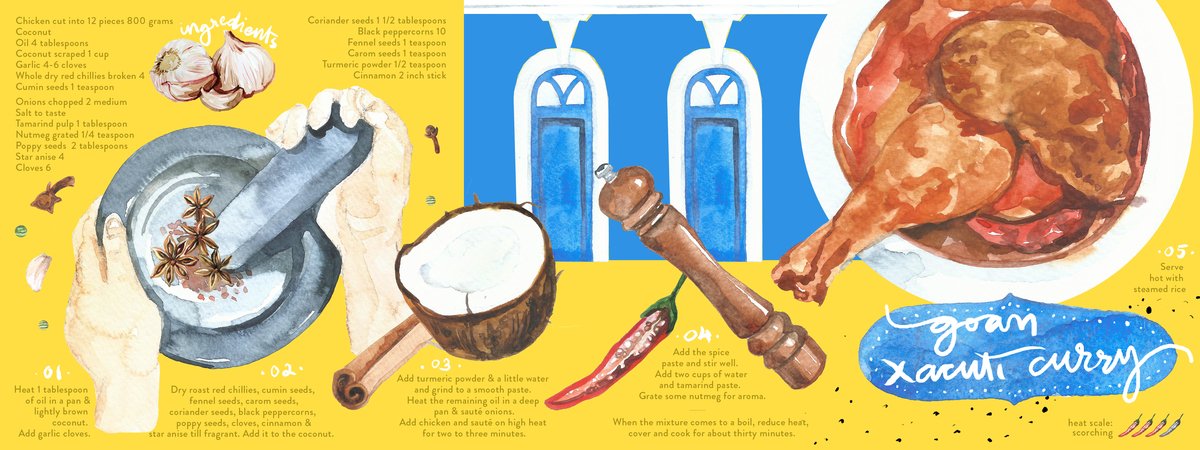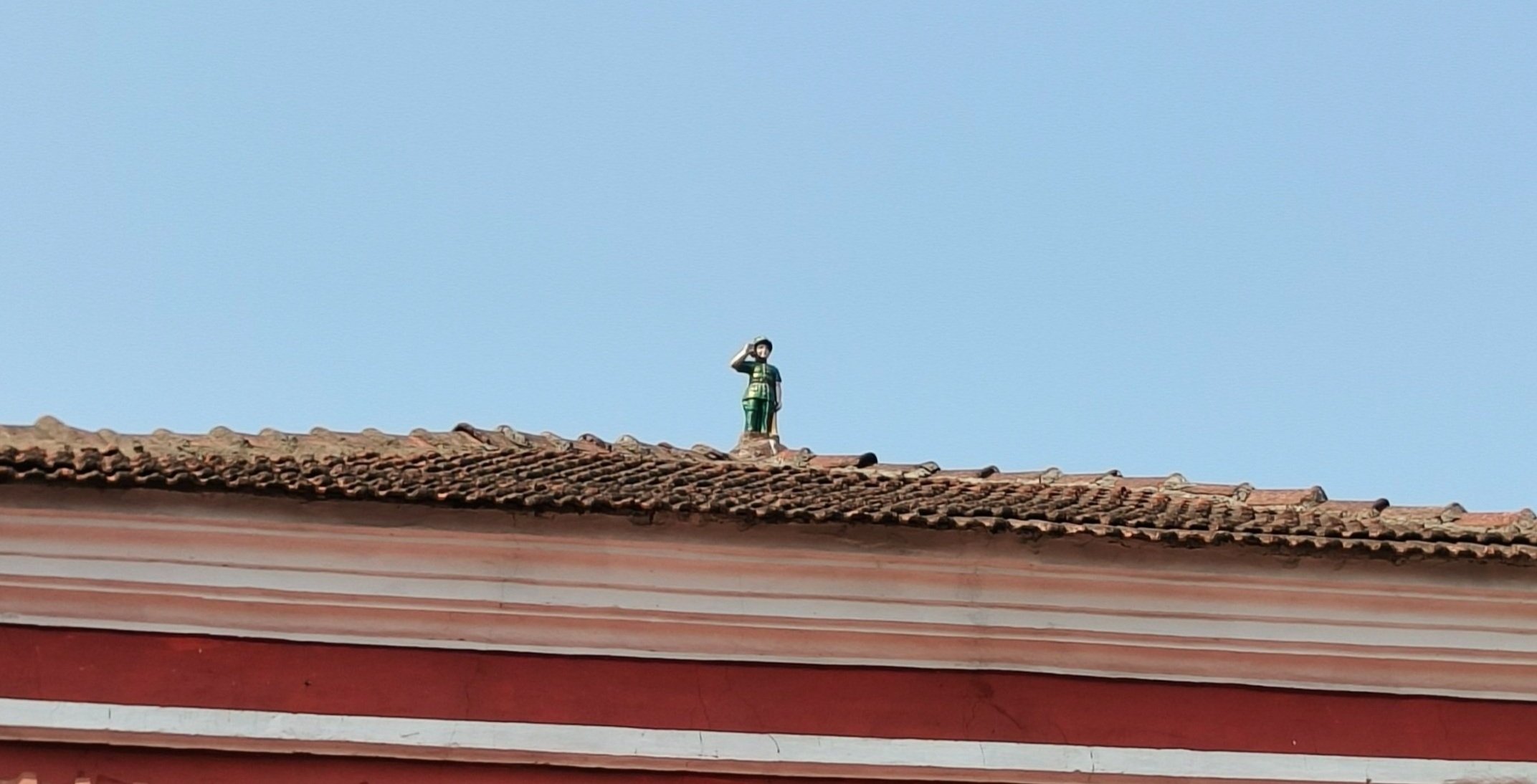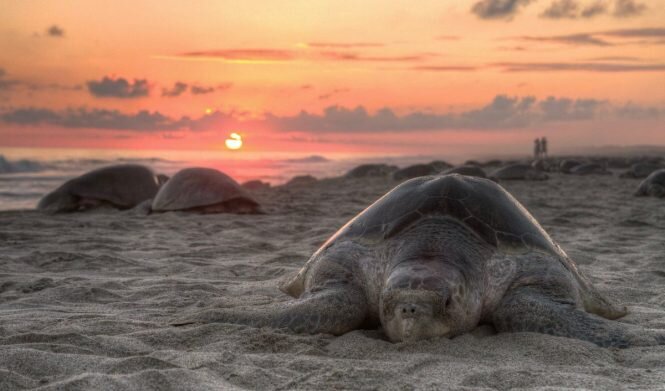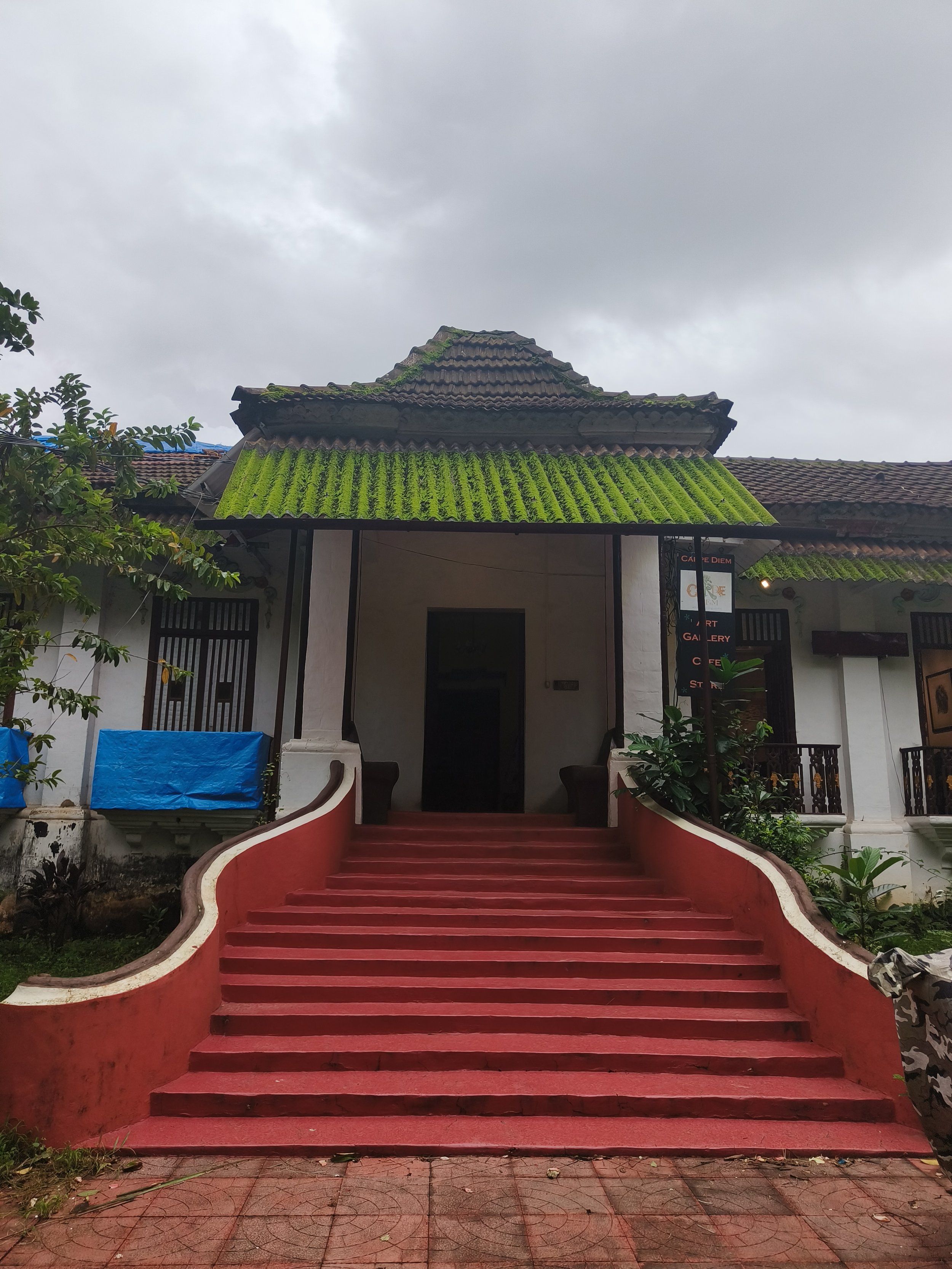Poster sourced from Sunaparanta
On April 10th, 2025, Sunaparanta opened Shadow Script, an exhibition of works from the 5th edition of the Goa Open Arts Catalyst and Engage Artist Grants 2024-2025. The exhibition was on view from April 10th, 2025, to May 3rd, 2025. Since 2020, these grants have supported Goa’s artist community in sustaining and expanding their creative practices. This year’s showcase highlights the works of the latest grantees, developed over six months of exploration.
Presented in collaboration with Goa Open Arts, Shadow Script features works by Divyesh Undaviya, Kiran Tamboskar, Pragya Bhagat, Shilpa Mayenkar Naik, Shyam Pahapalkar, Sumit Naik and Studio Button, led by Katerina Kubareva, in collaboration with Nataliia Marynenko.
Theme / Setting
Exploring themes of time, memory, and perception, the exhibition examines what is seen, what remains hidden, and what endures. Shadows — both real and symbolic, become a language of storytelling, revealing histories, shifting landscapes, and evolving identities.
Shadow Script lets you step into a world where art becomes a poetic meditation on the ways we shape and inherit meaning.
Image of artists and team, sourced from Sunapranta
Shyam Pahapalkar
Shyam Pahapalkar is an environmental artist whose practice explores the intersection of nature, materiality, and environmental change. With a background in art and mathematics, his site-specific installations and sculptural interventions reflect a precise yet intuitive engagement with landscape, memory, and time, responding to Goa's evolving environmental and cultural landscape. He uses natural materials and found objects to examine the fragile relationship between human influence and nature, tracing historical and ecological transformations.
Pahapalkar's works map subtle shifts in nature and memory, revealing how decaying structures and discarded remnants speak to time, erosion, and human touch, often referencing Goa's heritage and the tensions between preservation and consumption. His sculptural installations create meditative spaces where light, shadow, and form converge, inviting reflection on the impermanence of landscapes and the impact of human intervention. As a Catalyst Grant recipient, Pahapalkar has expanded his work, experimenting with new materials and processes to engage more deeply with Goa's changing landscapes and layered histories.
Pragya Bhagat
Pragya Bhagat is a poet, essayist, performer, and storyteller whose work feels like a living poem, intimate and lyrical. She weaves narratives that explore displacement, identity, and vulnerability, blending spoken word, text, and performance into immersive experiences.
Rooted in her travels across India and inspired by the mystical practices of women, Bhagat's work invites us into a world where memory, myth, and resistance coexist. Her art, including works like Magical Women, delves into these traditions, examining the complex realities of these women and reflecting on gender, power, and the violence of witch hunting. Bhagat's works use poetry, song, and sculpture to evoke the mystery and resilience of these practices, drawing from her experiences across various Indian regions. Through her diverse practices, which include founding the Poetry Circle in Goa, she creates spaces for collective storytelling and dialogue.
Divyesh Undaviya
Divyesh Undaviya's work explores the feeling of being in-between, shaped by his experience of moving through many homes. His drawings, sculptures, and installations, often using natural materials like ash and charcoal, carry traces of places left behind and a longing for roots. Undaviya's practice, now based in Goa, creates quiet, immersive spaces that reflect on memory, care, and transformation. His art examines the transitions between places - physically, emotionally, and metaphorically - and how landscapes hold memories and emotions. Inspired by the relationship between self and landscape, his works invite contemplation, self-awareness, and reflection. As a Catalyst Grant recipient, Undaviya has deepened the emotional and spatial impact of his work, shaping immersive gallery experiences.
Studio Button in collaboration with Nataliia Marynenko
Studio Button, an animation studio based in Goa, uses art as a therapeutic tool, particularly for communities recovering from trauma. Led by Katarina Kubareva and Nataliia Marynenko, the studio provides a creative platform for expression and healing. Their 10-month project with the children of Isha Kripa Sadan, a home for girls in distress, involved weekly animation sessions. These sessions empowered the girls to transform their emotions and experiences of trauma and displacement into visual storytelling. The resulting film, shaped by the children's voices, demonstrates the power of art in fostering resilience and new narratives. Studio Button's work highlights how art can offer a space for play, expression, and transformation, enabling healing and growth.
Sumit Naik
Sumit Naik's practice merges hyperreal charcoal drawings with sculptural paper forms, exploring narratives of loss, remembrance, and transformation. Deeply influenced by architecture and emotion, his works intertwine figurative drawing with the structural possibilities of paper. Naik's intricate drawings and sculptural interventions express themes of grief and acceptance, reflecting how loss shapes our internal landscapes. Paper, used both as surface and structure, becomes a metaphor for impermanence, holding traces of the past while allowing for renewal. His works capture the intimate and universal experience of loss, from quiet echoes to gestures of release, reflecting the interplay of memory, time, and space. Through this interplay of fragility and form, Naik's art speaks to the tension between holding on and letting go.
Shilpa Mayenkar Naik
Shilpa Mayenkar Naik's work finds poetry in the everyday, where domestic life, memory, and nature converge. Her practice transforms the familiar into the meditative, reflecting on how objects carry ritual, presence, and personal histories. Naik draws inspiration from her surroundings, engaging with mundane objects, flora, and fauna to explore deeper narratives.
Her installations, like those featuring suspended ceramic Ovala flower garlands, evoke the fleeting beauty of Goan traditions. These works play with perception, blurring the line between permanence and ephemerality through light, movement, and shadow. By capturing the tension between ephemerality and permanence, Naik's art invites stillness, reflection, and an awareness of subtle transformations.
In conclusion, the exhibition proved to be a thought-provoking exploration of shared themes by diverse artistic voices. It was compelling to witness each artist's unique interpretation, demonstrating a deep engagement that extended beyond the mere creation of the work. The installations fostered a heightened level of viewer engagement. The thoughtful management of space within Sunaparanta, along with the deliberate layout of the installations, played a crucial role in shaping the overall experience. Furthermore, the strategic use of lighting was pivotal, enhancing the artworks' impact and, in some cases, serving as a vital element in their completion.
Text and Images by V V Kusum Priya



